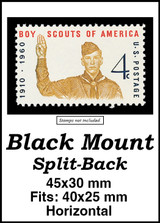U.S. #1683
1976 13¢ Telephone Centennial
Issue Date: March 10, 1976
City: Boston, MA
Quantity: 159,915,000
Printed By: Bureau of Engraving and Printing
Printing Method: Engraved
Perforations: 11
Color: Black, purple and red
U.S. #1683 commemorates the 100th anniversary of the first phone call, which was placed by Alexander Graham Bell on March 10, 1876. Bell’s famous words were, “Mr. Watson, come here. I want you!"
Rise Of Long-Distance Telephones
On March 27, 1884, the first long-distance phone call between New York and Boston was made.
In March 1876, Alexander Graham Bell received the patent for his telephone and made his first phone call just three days later. That June, he presented his invention at the Centennial Exposition in Philadelphia which gained the attention of the press, who in turn shared news of the telephone with the public.
In August, Bell made the first two-way long-distance call between Brantford and Paris, Ontario, Canada, a distance of about six miles. In the early years of the telephone, it was mostly seen as a means of local communication. Telephone lines connected people within cities, or to neighboring cities. But few recognized the possibility that people could communicate with each other across hundreds of miles.
However, the Bell Company recognized the possibilities and began working on a New York to Boston line, which would stretch 235 miles. In addition to the long distance, the line would use copper wire instead of iron. At a cost of $70,000, it was a large gamble with its share of detractors. One Bell Company official claimed, “I wouldn’t take that line as a gift.”
On March 27, 1884, the final coil of copper wire was stretched into place and the first phone call was made between New York and Boston. The success of that first phone call opened the eyes of many to the idea that the telephone was more than a form of local communication – it could connect people across the country. In 1892, the first line was strung between New York and Chicago (950 miles) and in 1915, lines stretched from San Francisco to New York (3,600 miles), inaugurating transcontinental telephone service. Later that same year, radiotelephone transmitted a call across the Atlantic, from Virginia to Paris.
Less